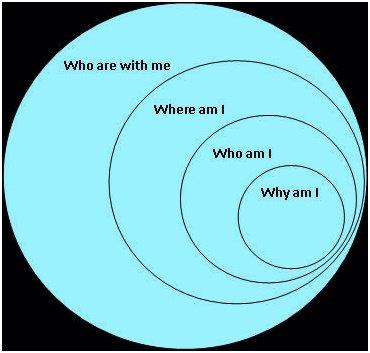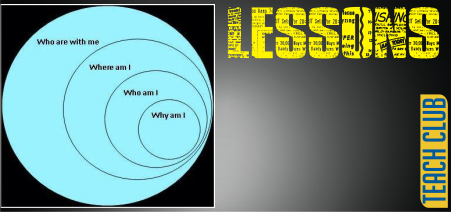Off all the jobs performed by the teacher in a school, creation of Lesson Plan is probably the most important function and dissemination of the same is the biggest responsibility. Whatever we can pool in through our acquired resources to create the most definitive plan will always be insufficient leaving us, the teachers with much to catch-up and improvise so very often.
Who are we dealing with?
Less said the better; a student in this age comes packed with Google processed brain, multi tasking abilities and attention span competing with the speed of a click. Igniting the interest in this new age student is challenging and to make one contemporary amongst them is the key to their upper storey.
Questions to answer in order to create a perfect Lesson Plan?
The axis of an ideal lesson plan should be rooted in the understanding of the student rather than the other way round. The teacher should think like a student and should try to answer questions on his behalf before creating a plan good enough to hold his interest. This is better illustrated in the figure drawn below

Why am I?
The first level is why we are being taught in the manner suggested. How will this help me? Can I learn this by questioning day to day affairs around me; will it help me developing an interest about them? One of the most important aspects which can accentuate learning is the incentive at the end of it. The desired result at the end of the topic should be firmly established.
Who am I?
The student wants to understand the concept in context to its own life. Can this be understood through the food I eat, clothes that I wear, hobbies that I pursue, Gods I worship, rituals that I perform, ambitions which I hone or habits which I have formed etc. This understanding will help the teacher to find the link between the topic and the student. This probably is the most vital link of this chain.
Where am I?
Can this topic help me understand my position in this society? The way I am supposed to behave, follow rules, perform duties etc, can the lesson plan act as pointers to help me gain an insight into this topic. Answering to such question will help a student develop an understanding in conjunction with the society, nature, ecosystem, biosphere, universe etc
Who am I with?
Do my friends, family, relatives, countrymen, acquaintances, mankind etc are also a part of this learning. How can they be included in gaining an understanding about this topic? Answering these will help students learn better and map the learning over a set of people they are acquainted with.
If a teacher picks all above cue and integrate all of them in an activity, it should result in a lesson plan good enough to hold students’ interest. We can also understand through an example;
Topic: Our Body/ My Body / Inside My Body
Objective: To observe and understand various parts of the human body
(Why am I) To begin with teacher will try to establish that today lesson is about our body and students in their turn will be able to understand the use of various parts of human body.
(Who am I )Items required: Chocolates
Activity: Teacher will hide chocolates in few corners. Post this the class will be divided into 2-3 teams.
Each of the team one by one will find 2 chocolates based on the clue given by the teacher. (Clue: regarding direction and furniture where the chocolates are hidden, teachers can also create riddles etc)
Once they discover, they can consume those chocolate.
Once they are done, the group needs to discuss the entire process of the above given activity and various body parts they have used to finish the entire task.
(For Example: Eyes to search, Mind to think, Legs to walk, Hands to pick etc)
(Where am I)
Teacher will show related pictures and quote examples of people with disabilities and make them understand how they manage their routine. This will not only induce passion but would also create an awareness of being careful in day to day life.
(Who am I with)
Students can later involve in a worksheet exercise where they will be questioned about naming some professions where a professional uses his parts of body to earn their bread and butter. For example Traffic Cop uses his hand, news anchors use their mouth, a footballer uses legs etc.
I believe, the integration of these four elements in a lesson plan is really possible only after the teacher has developed an in-depth understanding of his students. The more we know, the more we impart, the more we impart, the more we learn. The more we learn, the more we know.
About the Author:
Abhiney Singh, 35 is an educationist managing Brighton International School in the city of Raipur (Chattisgarh) in India. An Engineer and an MBA by qualification, his passion is primary school education. One can reach him on abhiney@brightoninternational.in or read his blog on https://brightoninternational.in/teachclub/
[Contact_Form_Builder id=”2″]
- Open / Starta School in India and CBSE Affiliation - May 31, 2022
- Private School getting Affiliated as a Sainik School - January 28, 2022
- Teacher Awards - September 20, 2021

Realy interesting .
It is an admitted fact that teacher uploaded with KNOWLEDGE has to make his students UNDERSTAND the realities of life .For it he has to be INNOVATIVE & not IMITATIVE.He has to be a LEARNER and then transact.
I liked the lines- The more we know, the more we impart, the more we impart, the more we learn. The more we learn, the more we know. It’s true.
I totally agree with you. Give me some idea/flow chart to make a lesson plan with international mindedness involved in it.